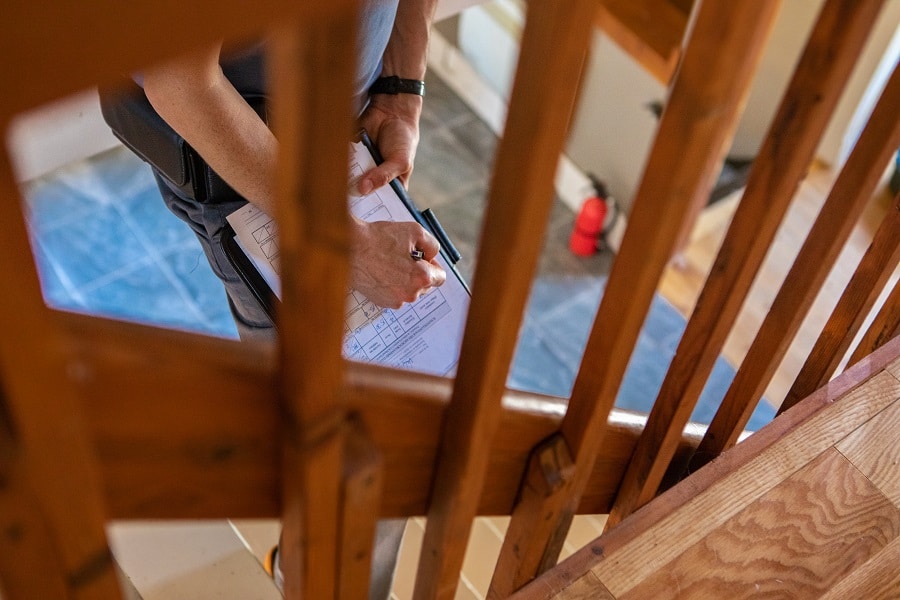Contact Brighton Damp Treatments Now to Speak With an Expert.

Structural dampness is the presence of undesired moisture in a building’s structure, which can be caused by water incursion from the outside or condensation from within. Rising damp, for example, can damage the wall lower structure, compromising its stability and degrading its appearance. Sussex Damp Experts can deal with this problem and offers a reliable rising damp treatment.
Both of which are influenced by the ambient environment. Condensation and rain penetration are responsible for a large percentage of damp problems in buildings. The form and porosity of the construction materials through which this evaporation restricted capillary penetration occurs are dictated by the shape and porosity of the construction materials. This evaporation limited capillary penetration occurs—higher levels of humidity increase structural damp, independent of the factors that cause it.
Structural dampness is dangerous because it compromises the structure and the building’s stability, even more so when there’s wood on the building’s structure. If you have any concerns about dampness, give our damp proofing specialists a call on XX or contact us to receive expert advice on addressing the situation. We can assist you with a complete damp and timber survey that provides you with the most cost-effective solutions.

No matter how ancient, rot is the most common cause of timber decay within the structure when it comes to any building. Wet and dry rot are the two most frequent types of rotten wood caused by fungal decomposition in building timbers.
Despite rot being the most common cause of timber decay, woodworm also contributes largely for timber decay.
Unfortunately, humidity and timber rot issues, as well as some species of woodworm, go hand in hand; it’s as simple as that: no damp, no timber decay. The sooner you address the issue, the less money it will cost. If left unattended, the feared Dry Rot Fungus (Serpula lacrymans) will germinate, costing thousands of pounds and causing significant damage to the building’s structure.
Condensation is a significant source of moisture and mould inside both old and modern buildings because it’s a consequence of our daily activities. Condensation is more common in inadequately heated and ventilated properties, and it usually gets worse during the winter months, which are referred to as “condensation season” in the industry. The high moisture levels can be reduced by using a well-balanced heating and ventilation system. If uncontrolled condensation can produce mould and during time can affect the building’s structure, especially timber structures.
Similar to spring cleaning, inspecting your home for symptoms of wood rot or dampness should be done once a year. It’s an excellent time to do it in the weeks leading up to winter when you’re weatherproofing your home. A long-handled screwdriver and a bright flashlight are required for the inspection.
Look for evidence of discolouration and swelling on the window siding. Paint can hide rotten wood, so make sure the wood is rough and sturdy; jab the siding with your screwdriver. You have rotten wood if the wood feels spongy and the surface gives in when you touch it. In the attic, use a bright spotlight to look for discoloured wood. If you find any, move on to the screwdriver test. The underside of the roof decking, the joints where the wood components connect at the top of the roof, and the borders of the attic where the rafters slope down to form the eaves are all good locations for wood rot in the attic.
Inspect the wood members in a basement or crawl room with a flashlight to look for discolouration around the perimeter wood plate that is right on top of the concrete basement wall (sill plate). Examine any discoloured areas with the screwdriver. Look for discolouration or water leaking on the floors and walls around baths/tubs, under sinks, and around the water heater.

Dampness tends to create secondary harm to a structure. Unwanted moisture encourages the growth of numerous fungi in wood, which can lead to rot or mould and sick building syndrome. Wallpaper loosens when plaster and paint degrade because of a damaged damp proof course, causing rising damp. Surfaces are marred by stains caused by water, salts, and mould. The highest levels of airborne mould are seen in buildings where there has been a large mould infestation, usually due to severe water infiltration or flood damage. Moulds may grow on nearly any surface and thrive in environments where there is a lot of moisture, such as leaking roofs or high humidity levels.
Mould concentrations in the air can be breathed and also have negative health consequences. Fasteners made of steel and iron rust. Mortar may crumble, and salt streaks may form on the walls from the outside. It may also lead to poor indoor air quality and respiratory sickness among those who live there. In severe circumstances, the afflicted wall’s mortar or plaster may fall away.
Often when a building has damp problems, more than likely, the timber structure has already started to be affected. That’s why timber damp proofing treatments are so important, as a preventive measure for future structural problems, whether it’s straight after a renovation or to treat existing old structures. It’s always better to prevent and avoid structural repairs.
If you detect any of these signs, please contact us or call XX to ask for advice and help dealing with the situation: the sooner, the better.
Contact Brighton Damp Treatments Now to Speak With an Expert.
Structural timber damp proofing will help prevent humidity from affecting the timber structure of the building, avoiding structure degradation and guaranteeing the building’s stability.
When applied in a complete damp proofing strategy, together with other damp proofing methods for walls, ceilings and floors, it can increase the building’s life and improve life’s quality and security to all people using the property.
Rot flourishes in areas where timber comes in contact with moisture and the wood remain damp. It thrives in humid environments where wood is exposed to moisture and remains damp. Nonetheless, we don’t only get rid of the rot during treatment; we get to the root of the problem. We figure out how the wood comes into contact with moisture and prevent it from happening again. Timber damp proofing treatment should be performed by experts who are familiar with the procedure and can offer long-term solutions. Treatment delays might lead to a compounded increase in treatment costs. If you discover symptoms of fungal development or damp signs, you should contact a damp proofing specialist like Sussex Damp Experts right away or call us on XX.
Sussex Damp Experts offers a diverse range of goods, brands, and products.
Each damp proofing case has its own set of requirements and constraints, resulting in a plethora of treatment and repair options for timber damage and dampness proofing.
Because no two cases are alike, please get in touch with our staff at 01273 920588 for a customised investigation and quote on the best cost-effective solutions.

Sussex Damp Experts damp proofing services’ can help you with everything from surveys to treatments, damp proof and repairs, whether it’s on wood, walls, ceilings, or floors. Our clients include commercial property owners, property management companies, and residential property owners.
Our damp proofing treatment experts will precisely assess and identify the severity of the damp problem in your home. Our expertise includes specific damp and timber treatments and rotting timber repairs using the most effective procedures to tackle the problem.
Our experts have received training that meets and exceeds the PCA’s standards (Property Care Association). Our surveyors are Certified Surveyors in Remedial Treatment (CSRT), ensuring the highest level of service to our customers.
For skilled damp proofing and timber services, call us at 01273 920588 or send us an email. Some benefits of choosing our services:


Max and his team have been at our property all week and I really can’t thank them enough for the fantastic job they’ve done on plastering both our walls and ceilings. They have literally transformed the appearance of our house! Not only has Ma…
From start to finish Max has been incredable. His knowledge lin damp proofing is second to none and his team where very clean and polite. The plastered finish was like glass so happy we choose Max Plastering for job.
Lovely bunch of lads left a very neat and clean job. Problem was solved.
Perfect Finnish and all left clean and tidy and no mess. Used Max previously and would not hesitate to ask him carry out more work.
Max, Harvey and Stuart arrived promptly as arranged. Done a great job on our outside rear wall. Work completed to a high standard, removal of all old material and cleaned up after themselves. I am so pleased with the standard of their work they ar…
They turned up on time and carried out the works in a very professional manor leaving the front of the house clean and tidy. Very impressed would definitely recommend.
I have to say that on every level Max (with Stuart and Harvey) did an extremely professional job! They explained what they were going to do, they were polite and courteous and respected that they were coming into our home. The plastering is of the…
I called max and he managed to come around the same day to do a survey. The next day I received an extremely detailed survey compared to any other damp proofer which made me feel very at ease that he was going to do the right job. Max and team tur…
Contact Brighton Damp Treatments Now to Speak With an Expert.